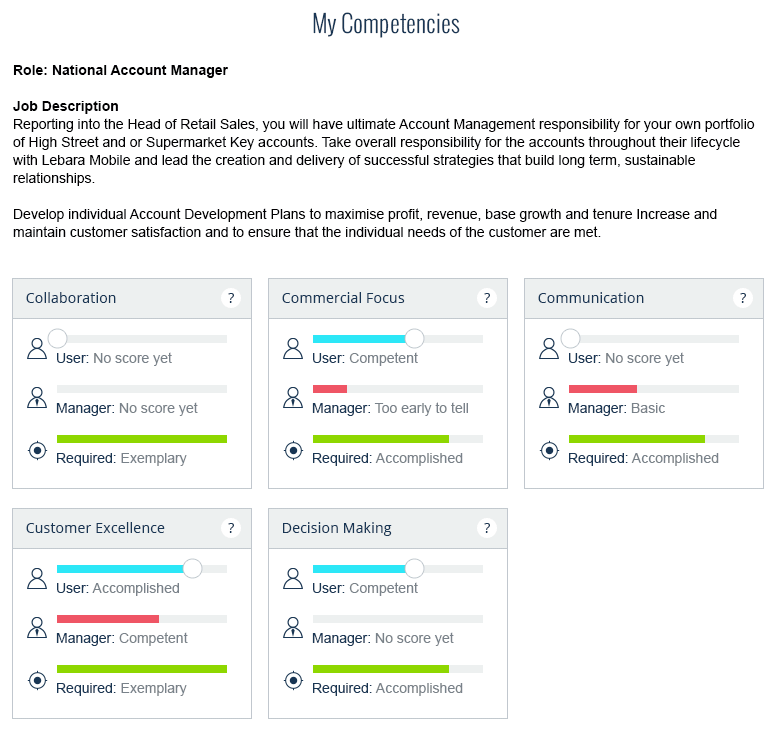Greetings performance management lovers! This is the third part of our series on the fascinating world of workplace performance management. If you like what you read, then please subscribe to our blog using the sidebar to the right, or follow us on Twitter for regular updates!
 Think about any job role and try to imagine the perfect employee. Chances are you’re not trying to picture what they look like, or what they’re called, or what their favourite era of David Bowie is. Instead, you’ll be thinking about the ideal skills and behaviours they’re going to be bringing to the table – their competencies!
Think about any job role and try to imagine the perfect employee. Chances are you’re not trying to picture what they look like, or what they’re called, or what their favourite era of David Bowie is. Instead, you’ll be thinking about the ideal skills and behaviours they’re going to be bringing to the table – their competencies!
When we looked at objectives and KPIs, we were looking at ways to measure attainment, or what an employee has achieved. When looking at competencies, we’re tracking how they achieved what they did.
Of course, the types of competencies an employee needs depend entirely on their role. So a developer might need to be competent at Java and PHP, whereas a salesperson is more likely to need good communication and research skills.
The case for competencies
 A 2006 study by Bersin & Associates found that a whopping 86% of HR managers find competency management to be either important or critical to performance management success. Despite this, the same study also found that 45% feel that important competencies are either spotty or non-existent in their organisation!
A 2006 study by Bersin & Associates found that a whopping 86% of HR managers find competency management to be either important or critical to performance management success. Despite this, the same study also found that 45% feel that important competencies are either spotty or non-existent in their organisation!
Tracking competencies can be a powerful way to manage performance. It lets you pinpoint an employee’s strengths and weaknesses so that you can focus training and development efforts on the weaker areas. But there are also other benefits.
For example, it’s a great way to make clear exactly what is expected from a job role. So you can be sure that Gary in Accounts definitely knows that he needs to have a decent grasp of finance!
It’s also useful for the employer, as it gives them the opportunity to think carefully about exactly what they want from someone in this role. Taking the time to map this out will help future recruitment efforts, as the employer can make sure to only bring in people with the right competencies, or with the potential to develop them.
So how do we do it?
Our robust Performance Centre has taken the world of performance management online! The dedicated competencies area is designed to let employees and managers keep track of an individual’s strengths and weaknesses, so that they can target their development to the areas which need more work.

At the top is the employee’s job description, which is there to remind them of their responsibilities and what accomplishments they should be working towards. Then the different competencies this role requires are laid out clearly in front of them. If they want to read more about exactly what is meant by each one, they simply click the help button.
To make things as user-friendly as possible, each competency is followed by three colourful sliders. The first slider lets and employee self-assess their ability in that area, from ‘foundation’ to ‘exemplary’. The second bar is used by their manager to give their own assessment of that individual’s ability, and they can attach comments to explain any disagreements. The final bar is the target level, which someone in that job role should be reaching.
Keeping an eye on this page is an easy way for an employee to make sure they’re focusing their efforts into building up their weaker areas, making them a much stronger asset for the company!
You can’t complain about that!
Competencies are part of a learner’s journey towards changed behaviour. If you want to find out more about the process of behaviour change why not take a peek at our guide: Behaviour Change in the Workplace?
It will help you ensure your training leads to longlasting competency! Click here to grab your copy!








